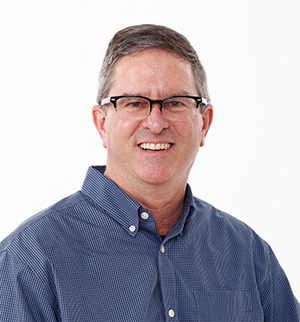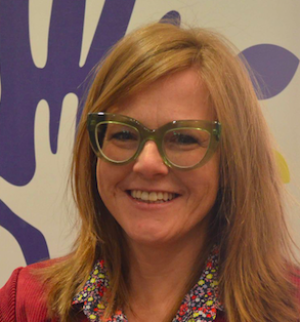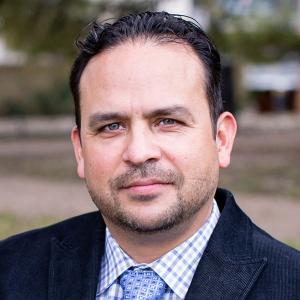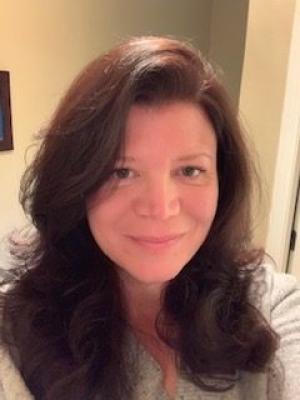Resources

I hinted in my previous post that maybe I should do an illustrated version of my in-process book, Zen and the Artful Buddhist: Asperger’s, Art, and Academia. I have illustrated a few pages, but it’s taking far longer than I imagined it would. This book idea has been percolating for a few years. Some days I want it to be published by an academic press, but now that it’s morphed into an illustrated book, I’m not so sure about an academic press. The book meanders. As does my mind. All the time. Illustrating the book feels right: it’s creative, innovative, and will illustrate (literally) my evolving understanding of how I’ve been impacted by learning late in life that I have Asperger Syndrome (now, a part of ASD, Autism Spectrum Disorder). One need not have Asperger’s to reflect on one’s life, to be sure. Yet this is the lens through which I see more clearly my years as a professor.Before starting to illustrate the book, I was working on and off on another large (31x51 inches) painting. I only work on the painting an hour or so at a time, since it requires intense concentration and it is physically demanding. It requires standing, and the more I paint, the further I have to reach to complete rows higher on the paper, creating strain on my back, eyes, and wrist, to name a few. This current painting is precisely what I have been working on at various points for the past several years, namely short, parallel lines in multiple rows. While working on the piece, I thought a lot about my teaching style.So far, my illustrated book project shows various connections between my art, Asperger’s, Buddhism, and academia – all large topics themselves. I’m not an expert on Asperger’s, but what I’ve learned provides insight into my art-making. And insofar as any artwork contains the “fingerprints” of the artist, my pattern-heavy, highly-repetitive paintings also connect to themes I recognize in how I taught my courses. Of course, I could add much more nuance, but here is a short list of Asperger-related traits that run through my art and teaching:Detail: I always thought it was normal to focus on details, but I see now that I was having students look at the trees so much that we sometimes would miss the forest;Precision: accurate pronunciation of foreign terms (e.g., Sanskrit);Repetition: similar assignments, just different material;Nuance: overall picture shows nuances, but one still needs to look intently at the details first;Plans: agonizing over planning the syllabus every semester.My latest large painting contains roughly thirty-one thousand parallel lines, each one fitted within a half inch band of parallel lines. Like my teaching, it contains lots of details, all of which are necessary for building the overall painting. Looking back on my teaching, I now wonder what sort of balance I struck between looking at the individual lines/trees and making clear the connections that were being constructed throughout the course/forest. While illustrating my book project, I see similar challenges emerging. My next (illustrated) post will delve into more nuances about my progress.

(An audio version of this blog may be found here.)We were not gathered to analyze the problems facing systems of education, societal storms, weaponized misinformation, wars around the globe, or climate change. We were not convened to solve problems of organizational structures or craft new and much needed policies and procedures to salvage educational enterprises. Rather, this was a gathering of Wabash Center leaders—highly credentialed colleagues, experts in their own fields, invested in the art and innovation of teaching.Wabash Center leaders assembled, as the invitation read, “to whet appetites, inspire new thinking, beckon the muse, provide new insights, rekindle the imagination, move us out of the constraints of boxed/hobbled ideas, and encourage new kinds of experiments in our classrooms and curriculum. Specifically, we gather with prominent thought leaders from other fields than religion to grapple with this meta-question:What are the possible futures of teaching religion and theology, and how do we imagine and create those possibilities? Our discussion centered on the belief that the map/plan/direction to the new world is in our shared imaginations and risk-taking capabilities. For the sake of possibility, we assembled to nurture our collective curiosity.Our presuppositions were not new or novel. We need a new vision if we are to have educational paradigms adequate for a democratic society in the coming future. We know that it is not enough to tweak, patch, or cling to, hollowed-out traditions of the current operation of higher education. If we are to establish systems of education which can sustain a flourishing society into the future, we must be about the business of casting new visions, pursuing new longings, and seeing new approaches. For this, we need curiosity, clarity of imagination, better communication concerning unusual approaches and a willingness to open ourselves to originality. We need detailed dreams and concise dreamers who will, with precision, help wean us from our dogged reliance upon the tired, ineffective paradigm. We convened to prepare for a future that is much different from our now.The Curiosity Roundtable gathering did not disappoint. Feedback from the participants told us that we convened a worthwhile conversation. Here is a sampling of the feedback from participants: Using an approach related to curiosity wherein none of us was expected to be the experts, opened spaces for authentic engagement, laughter, reflection and community building.The opportunity to connect with others and engage in a different set of carefully curated conversations really accomplished the task of awakening our curiosity.I was surprised, but shouldn’t have been by now, at the vision of the Wabash Center to bring a set of unexpected conversation partners to the group – the Porche experience, an artificial intelligence sociologist and activist, a racialized socialization of children expert, a spoken word poet, and artist salon conveners. It worked! It worked in ways that will keep working on me, and I trust the whole group, in our own ways.Throughout our conversation we identified practices to foster curiosity. Here are a few of the ideas which bubbled around during the conversation:Push yourself to experience the wild, untamed, unfettered, out-of-the-box, unplanned spontaneous, improvisational, and undisciplined.Stay rested. Know what your body feels like when rested. Pursuing curiosity requires rest and calm.Learn to pay attention to daydreams, sleeping dreams, nightmares, desires, fantasies, and wishes. They might be as important or more important than aims, goals, and outcomes.Read beyond your academic discipline. Become an interdisciplinary agent. Read novels, short stories, creative nonfiction, stories of all genres.Write novels, short stories, creative nonfiction of all descriptions.Surround yourself with creatives—people who are unafraid of painting, sculpting, creative writing, film making, dancing.Practice new artistic expression(s) then pursue them passionately.Kindle the joy of being deeply moved by beauty or freedom. As best you can, avoid the ugliness of participating in oppression, exploitation, and the marginalization of people – especially if it is to your benefit.Practice silence, stillness, meditation, and contemplation.Attend to the health of your body as if you love it and need it to thrive.Attend to the health of your mind as if you love it and need it to thrive.Attend to the health of your soul as if your life depends upon it.Kindle relationships with family, friends, neighbors to surround yourself with love, care, and mercy.With regularity, make believe, pretend, fantasize, and goof off.Practice compassion because it is good education.The Curiosity Roundtable concluded with the challenge to each participant to develop a praxis project inspired by our conversation which will continue to unbridle their curiosity. The proposals are due in a couple of weeks. I suspect the projects will transform our world for the better!

I recently returned from an overnight trip to see some old family friends. They live about four hours away by car, so I only make it for a visit once every year or two. My friends have seven children, ranging from teenagers to young adults. So, there’s usually a milestone to celebrate in one of their kids’ lives, prompting me to make an annual trip. This year, it was the wedding of their oldest son.Their celebrations are always casual and relaxed, backyard parties including lots of food and drink. By the end of the evening, people either congregate around a bonfire or make their way into the living room.Their living room always makes an impression on me. Not because of its furniture or décor (it includes a well-worn couch and old piano, and is without a TV), but because of the way it welcomes and nourishes so many people.The room is typically full of people of all ages, races, and walks of life. It includes family members, old friends (like me), new neighbors and acquaintances, local migrant workers, single teenage mothers, children they are fostering (sometimes long-term, sometimes short-term), and even pet reptiles (this time I was introduced to an elderly snake who was struggling to deliver infertile eggs).The room provides a place to meet new people, to sing and dance around the piano, and to have conversations that relish in both the beauty and hardships of common humanity.Whenever I leave my friends’ house, I try to tell them how much grace I feel in their living room; I’m just so impressed by how a home created by two people can touch countless lives.And without a doubt, after each visit I reflect on my own life and reflect on how I might emulate some of their radical inclusivity and hospitality.I’ve been thinking about radical inclusivity quite a bit lately, anyway. Not so much in relation to my home, but to my classroom. I got to thinking about this while reading a new book by a former colleague of mine that notes how many diversity, equity, and inclusion programs and trauma-informed care trainings within the academy “remain entirely cognitively driven” and “situated within a deficiency praxis.” She says these programs are “not integrative or radical because they do not create ‘safe’ spaces for those of us who actively embody and allow our sensitive, intuitive implicit selves to be present”[i]The major insight I have taken away from this book is that in order to create these “safe” spaces, those of us within the academy need to resist the age-old structures of cognitive and colonial-patriarchal knowledge that have deemed all other ways of being and knowing as deficient.As a white tenured professor, I have certainly benefitted in many ways from this model. But I have also been reminded of the ways in which I have not measured up to this model: I am a woman, my family is blue-collar; my academic training has not been elite or traditional; and I have a proclivity for religion, and spiritual and embodied ways of knowing. That I have not been good enough has been said to me both directly and indirectly (in the form of jokes and insults) by professionals in the field, sometimes over “collegial” drinks and dinners, and sometimes as direct feedback in rejections from academic programs and teaching positions.Perhaps, because of these experiences, I have wanted something different for my students. I have wanted each and every student, regardless of their academic preparation, socioeconomic background, sexual orientation, or racial, gender, or religious identification, to feel welcome in my classroom and to have the opportunity to learn.Up until now, I’ve been trying to create this safe space mostly by my attitude and as a teacher. As much as possible, I try to connect with and meet each student where they are at. I do this by learning and using their chosen names, creating a space for them to connect their life experiences to course content, respecting differing opinions, and devoting some time in each class to checking in with how they are doing as people (not just as students). I also try to avoid using academic jargon, or ways of speaking which are unfamiliar to first-generation students.This, I hope, creates a safe and welcoming vibe similar to that in my friends’ living room: a space that is free from pretense, and in its simplicity allows for a deeper recognition of the diverse beauty and hardships of human experience, which comprise our common humanity.Something interesting about my friends is that one of them is a medical doctor, but nothing about their home, mannerisms, or even the company they keep indicates this to others. They intentionally live a radically simple lifestyle, without concern for status, possessions, or notoriety. Their home embodies a space that is free from the paradigms which are typically used to measure human worth. This, of course, is a sign of resistance, and is perhaps the main reason that people from all walks of life feel so welcome and comfortable in their space.This is a type of resistance that I can introduce to my classroom practice to make the space even safer. Beyond a welcoming presence, and course material that is representationally inclusive, I’m now considering how to reimagine the cognitive structures in which my courses are based. How might I measure learning and construct assessments in ways that are, dare I say, nonacademic? How can I create a space where first-generation and prep school students alike are on the same footing? What would an assignment in a first-year theology course look like, that allows people to learn in ways more unique to them and less-determined as deficient by old paradigms? How can I signal a deep valuing and respect for diverse and embodied ways of knowing?I look forward to suggestions from others! Notes & Bibliography[i] Iris Gildea, The Poetry of Belonging (Toronto: Mad and Crip Theology Press, 2024)

“I just do not know if I have it in me to write another paper” were one student’s words midway through my Hosea exegesis course. By this time, I was on my third semester of pandemic teaching. Zoom fatigue had set in alongside our unceasing grief for the daily Coronavirus death tolls. Hearing each other in a virtual space that seemed coerced and yet routine was not limited to a spotty Wi-Fi signal or faulty audio equipment. Our hearing—that kind we learn from—had fallen numb. Pre-pandemic, the design and pedagogical approach to my Hosea exegesis course had reached a sweet spot. I had a good learning balance between group work (contextualizing the biblical critic and reading in community) and individual final projects. As for the psychosocial dynamics of this space, it was easy to read the feeling states in the room—enervation, anxiety, but also, surprise, discovery, or intrigue. And by midway through the course, everything in my syllabus usually went as planned, barring a few late papers. As such, hearing to learn and learning to hear seemed to work harmoniously with our embodied practices in the classroom. The abrupt shift to pandemic teaching posed unique challenges to my hearing-learning reflexes. Upon reflection, the issue was not auditory but rather a stale hollowness of presence or what I call “the hollow hearing effect.” Arriving at this diagnosis of the learning experience was, indeed, a process, beginning with the shocking midsemester flip to online teaching to running a new learning platform to revamping my syllabi for a new virtual world of teaching Bible. Soon, the rhythms of my synchronized classroom felt random and sluggish, in part because of our connectedness to the globe’s misery but disconnectedness on Zoom. Then comes spring 2021, the semester of my Hosea exegesis course. Going in, I recall feeling optimistic about my redesigned syllabus. Instead of my usual “reading in community” group assignment, I had students contribute asynchronously to a video community commentary. Here, students created a ten-minute video in which they read their English translation of the assigned Hebrew verse, highlighted one major poetic feature, discussed two contrasting interpretations, and lastly applied their reading to a contemporary issue (e.g., trauma, migration, empire, gender, violence, justice). Below each uploaded video commentary, students had the opportunity to pose questions and offer constructive feedback. Each week, their online community commentary unfolded according to plan. Although their feedback fell between modest and missing, their videos showed a genuine and critical engagement with Hosea. I was especially moved by their applications of Hosea to various contemporary issues (white privilege, anti-black violence, family separation at the Texas-Mexico border, reproductive justice, the pandemic, etc.). Despite the decent success of this assignment, students were still coping with the constraints and hardships caused by COVID-19. While I could help them decipher the trauma in Hosea, I had difficulty reading their own learning woes online. By week ten, it finally became apparent that my syllabus’ mechanical precision did not exempt students from the grief-inducing complexities of a global pandemic. Their day-to-day angst of forced immobility and family separation were coupled with a weekly dose of prophetic texts rife with trauma, violence, and abuse. Add to this their application of Hosea to contemporary traumas, and the results were a learning breakdown. Once I was made aware of this, I felt like I do when I travel with my family through an international airport. Usually, I am leading the way to our connecting gate. Without looking back, I soon go from a steady walk to a marathon-style stride. Though I arrive on time, my family is nowhere to be seen. Out of breath, they finally arrive asking angrily, “Why didn’t you stop for us?” Hence, though I made it to week ten of my syllabus, my students were “crawling towards the finish line.” Unlike my airport marathon, I decided to put the brakes on my syllabus two weeks before my Hosea exegesis course ended. As a remedy to my students’ learning woes, I decided to offer them a second option for their final project. In lieu of an academic exegesis paper, students could submit an art exegesis project. Indeed, my recourse to art was not some random contrivance. From the standpoint of prophetic literature, the art of poetry served as a viable care-strategy for coping with the traumas of imperial conquest. Moreover, artmaking and the traumas of forced migration have been central to my advocacy work in the US-Mexico borderlands (see Arte de Lágrimas: Refugee Artwork Project). Thus, to turn to art for a final project made sense at a deeper level. In the end, every student in the course submitted an art exegesis project, which included original art, an art talk, and reflection. Here is an example of one student’s triptych art exegesis (oil paintings): “I Will Tear” (Hosea 5:14) “I will love them freely…And lengthen his roots” (Hosea 14:4-5) “And Shall Arise among your people” (Hosea 10:14) Among the responses, one student stated, “It revealed to me things about the text and about myself that I don’t think I would have seen doing my standard mode of exegesis.” As their teacher, it gave me a way of hearing my students that was far from hollow but rather healing.

The idea of Art Theology raises the question(s): what is art and what is theology? We live within this incredible moment of decolonization where people are interrogating the ideas of the academy and its gatekeepers. Inspired by the decolonizing work so many are engaged in, Art Theology seeks to create something new. There are wonderful conversations going on. Beyond what art is, who decides what “great art” is? Who is a “great artist”? Where should “great art” be held? And who is privileged to view it? The old gatekeepers of “art” were many of the same gatekeepers of the academy. The academy, built by free white men who created the method of research. We teach college students to write research papers that argue a thesis. If they want to succeed in the academy, they have to learn to write this way: arguing judging defining using propositions being technical always reaching for “objective truth” I wanted a method built on and towards connection rather than argument. I have learned that the first step is to remove judgement. Get rid of the word great and tell me what it is to make art. I often engage my students in peer reviews, whether they are writing a research paper or making art. Before they meet with their partners, I ask them to write out their feedback by first summarizing the piece, then describing strengths of the piece, and finally offering questions or suggestion, (they only offer suggestions if they are sure they have understood their peer's intent in the piece). The thing they have to be sure of—and that I review in their feedback before they share it with each other—is that they remove all judgement. They struggle at first wanting to write, “I like your conclusion” or “This is great…” I invite them to remove like and great and say something more. This encourages them to go back and look more closely, read more closely, in order to reimagine the sentence to something like: “Your thesis is so clear from the very beginning of your paper through to the end. You keep returning to the thesis like a spiral throughout, it is this clear throughline reaching into the conclusion. When you restate your thesis in your conclusion it really it holds the paper in a very satisfying way.” Removing judgement not only helps them read more closely, it removes the fear that they often feel going into peer review. Once judgement is removed, we are free to make new things. Our focus shifts toward making art in order to engage in visual-thinking that creates new theological insights and understandings. What is theology really? The exploration of ideas and understandings of God? Knowledge of God? But, I do not just know things in my mind—I know them in my body. I also know them through making. Art Theology uses visual-thinking, seeing, and making to explore questions and ideas about God. In the abstracting grace series I created for the Wabash Center, I made my way into new questions and ideas about grace through painting and poetry. For example, in making, Is it like air? as I painted I somatically realized I had been unconsciously carrying an idea that grace was arbitrarily given. I didn’t know why Mary had been “full of grace” and I wasn’t. I reviewed what the academy had taught me about grace and saw that it was all bound up with sin and the idea of gift. Which made me wonder, if it is a gift how is it given? As I dipped my paintbrush into the white acrylic and made a swooping line I thought, maybe it is like air…all around us, all the time, and it is us who decide how we breathe it in. This insight had me revisiting Duns Scotus’ idea of the will and how it is the will that makes us human, not our intellect. Scotus said our will is where our capacity to love resides. This is the greatest gift we have been given, and it is all around us. We choose how mindfully we breathe. Through making art theology, a new rich understanding of grace came into being. A new understanding that discursive reasoning alone could not, and had not, given me.




